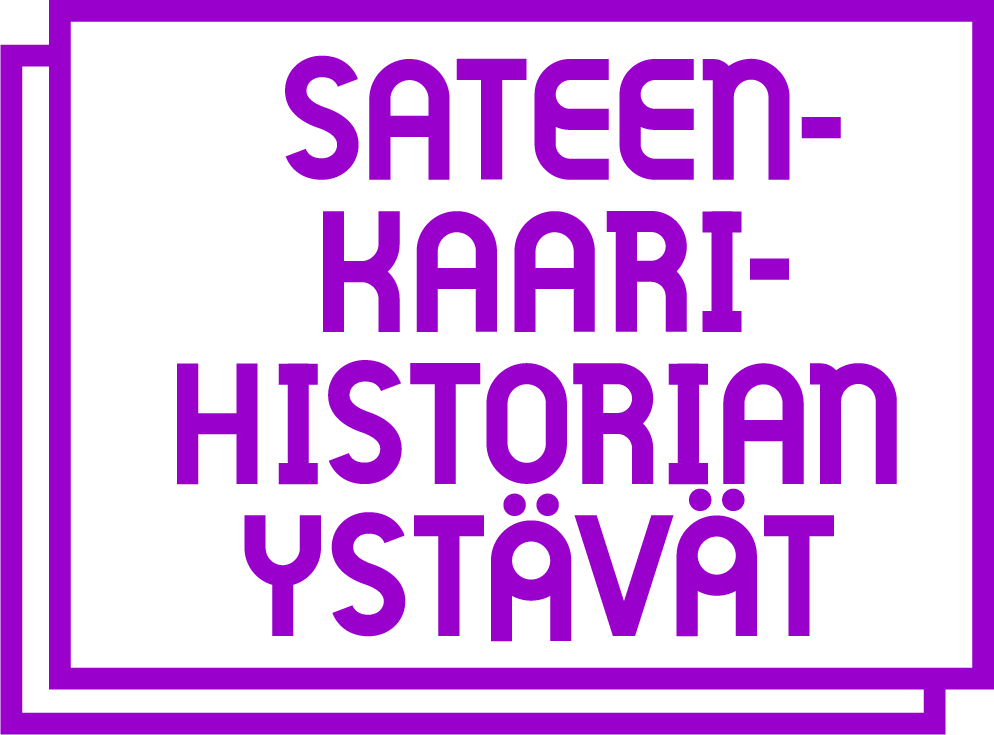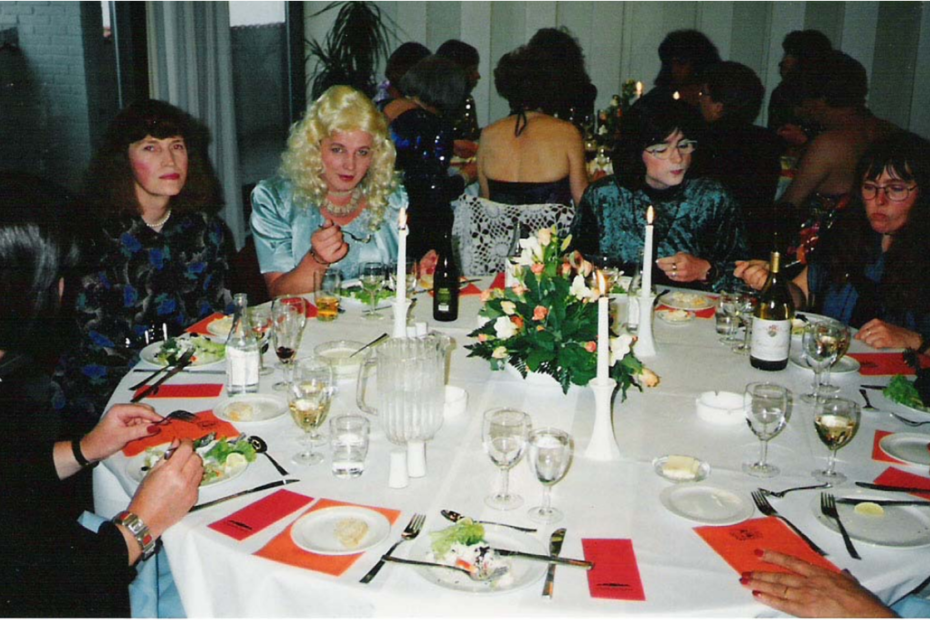“There were surprises, too. There was a group from Finland, and prior to this meeting, few people outside that country knew that there was any support organization for TV and TS in Finland.”*
(TV-TS Tapestry 65/1993, 78)
The quote above was published in TV-TS Tapestry issue 65/1993 in an article discussing a European transgender and crossdresser conference organized in Denmark at the beginning of the 1990s. TV-TS Tapestry, later known also as Tapestry or Transgender Tapestry, was a magazine about transgender issues published from 1979 to 2008. It started as a newsletter of a Boston-based crossdresser club named Tiffany Club and later it was published under the organization’s new name, International Foundation for Gender Education (IFGE).
The conference described in the article aimed to bring together European transgender and crossdresser associations and to establish links between them. Most of the participants in the meeting were from Europe, the US, and Australia. However, to the writer’s surprise, members from a newly founded Finnish transvestite** group had also attended the meeting. In this article, I discuss who those activists mentioned in TV-TS Tapestry were and what their presence in the meeting tells us about the international scope of the Finnish trans activism in the 1990s.
Dreamwear Club – a national or an international association?
I conducted my MA thesis in Cultural History on the history of a Finnish transgender and transvestite advocacy group, Dreamwear Club (DwC), which started organizing at the beginning of the 1990s as a support group for transvestites and their spouses. Dreamwear Club has been officially registered as an association since 1997 and its strategy has shifted from supporting only transvestites to supporting transgender women, transvestites, and transfeminine people.
As the international history of trans activism originating from Finland has barely been researched, Dreamwear Club has usually been examined only from the national perspective. However, my research has proven that Dreamwear Club had international connections, and the association sought to cooperate with foreign groups to develop the Finnish transgender field. The meeting in Denmark, for instance, is one piece of evidence for this goal: The activists described in TV-TS Tapestry were members from both Dreamwear Club and Seta (a Finnish human rights and LGBTI advocacy organization). They had traveled to the meeting through Sweden, where they became acquainted with the local transgender associations and formed relationships with Swedish activists. The purpose of their trip was to build relationships with international organizations and to acquire models for organizing transgender and transvestite activity in Finland. Seeking models of action from abroad was important for the development of the Finnish transgender community, since the activists of Dreamwear Club felt that the Finnish transgender community could not, at that point in the 1990s, be described as a full-fledged “community”.
Benefits of the international connections for the formation of Finnish transgender community
Previous research supports the claim that the transgender community in Finland was divided in the 1990s. According to sociologist Jan Wickman, the Finnish transgender community was very young and fragmented at the beginning of the 1990s: Dreamwear Club and Trasek (an association for transgender and intersex rights founded in the 1980s) were the only two national associations before 1994 and prior to the founding of Transtukipiste, a united association for all trans people.
Prior to 1990s there had been a couple of smaller local transvestite and transgender groups in Finland. For instance, a transvestite club named Jasmin Club, also known as Jasmiini-kerho, organized meetings in Keskusteluseura Psyke’s (an association for sexual and gender minorities that e.g. held social events in the 1970s and 1980s) club room. According to the activists of Dreamwear Club, building a united community in Finland was challenging, due to the arguments between transgender and transvestite groups about gender diversity.
I argued in my MA thesis that the visit to Denmark with the activists of Seta was beneficial to Dreamwear Club and the formation of the Finnish transgender community. The seminars of the Danish conference provided inspiration for Dreamwear Club and Seta to organize events together with Trasek for gender minorities in Finland from 1994 onwards. Working together in organizing the events brought transgender and transvestite groups closer to each other. According to the activists of Dreamwear Club, cooperating made the groups realize that Finnish gender minorities had common interests in making Finland a better place to live for all trans people, even though the group members might have had disagreements on a personal level.
The meeting in Denmark also led to cooperation between Swedish trans activists and Dreamwear Club. In 1994 Dreamwear Club invited three Swedish transvestite activists to participate in a Finnish transgender event, and in 1995 the activists of Dreamwear Club planned an event with seminars, similar to Denmark’s meeting, to be held in Sweden. Even though the Swedish activists ran the seminars, the members of Dreamwear Club helped with the planning and participated in the event.
British and American transgender magazines – a link to a larger community
The fact that the activists of Dreamwear Club knew about the meeting in Denmark is an indicator of the group’s international goals. The members of Dreamwear Club received information about international transgender affairs through British and American transgender magazines, which could be ordered through the club for a fee. For instance, the club distributed magazines like the British Rose’s Repartee, published by Martine Rose’s Rose’s House association (and printed later in Finland), and the American TV-TS Tapestry.
These magazines provided more information to English-speaking members and helped them to get a sense of the larger community beyond Finland’s borders. For instance, since writing letters was still common among the members of the club at the beginning of the 1990s, a member of Dreamwear Club could have reached out to an American or British transgender person through advertisements for correspondence which were published in the foreign magazines. TV-TS Tapestry also granted space for Dreamwear Club and Seta to inform American associations about events in Finland, and Dreamwear Club’s contact info was listed in the magazine’s catalog for international transgender associations for instance in issues 67/1994 and 78/1996.
Observing the activities of foreign transgender associations may have resulted in similar activities compared to the British and American associations. For example, Dreamwear Club’s custom of providing a dressing room to its members and organizing “coffee evenings” (kahvi-ilta) was quite similar to Rose’s House’s customs at the beginning of the 1980s, when Martine Rose founded the association as a safe place for crossdressers to meet each other. Furthermore, my research also proved that some members of Dreamwear Club had personal connections to Rose’s House. However, the impacts of these connections should be further researched.
In Conclusion
Not only did the Finnish trans activists have international connections in the 1990s, but their relationships with foreign associations also helped to model their actions in Finland. Since this subject has not yet been thoroughly studied, it would be important to examine what effects the relationships had in the long run, and how the relationships with foreign associations have developed through the 2010’s and 2020’s.
Jean Lukkarinen (they/them) has a MA in Cultural History and they have specialized in the history of Finnish gender minorities in their studies.
* TV and TS were commonly used as an abbreviation for the terms transvestite and transgender in the 1990s and the early 2000s.
** Finnish crossdressers use the term transvestiitti which translates to transvestite. The term is more commonly used in Finland than crossdresser (ristiinpukeutuja). Therefore, I’m referring to the members of the group as transvestites, not crossdressers. I’m also using transgender as an umbrella term referring to all trans people.
Sources:
Dreamwear 1994–2011. Periodical published by Dreamwear Club. Dreamwear Club’s Digital Archive.
Lukkarinen, Jean (2021): Kirjeenvaihtoa, vertaistukea ja vaikutustoimintaa. Dreamwear Club ry, sukupuolivähemmistöjen toimijuus ja toiminnan tilat Suomessa vuosina 1990–2011. MA Thesis in Cultural History, University of Turku.
Rose, Martine (2021): Rose’s Repartee. Shy boy to trans woman. Independently published.
Rose’s Repartee Home. Website, https://www.roses-repartee.uk/ (accessed December 01, 2021).
The TV-TS Tapestry Journal Issue 65 (1993). Periodical. 1993. Digital Transgender Archive, https://www.digitaltransgenderarchive.net/files/w9505047s (accessed December 01, 2021).
The TV-TS Tapestry Journal Issue 67 (Spring, 1994). Periodical. 1994. Digital Transgender Archive, https://www.digitaltransgenderarchive.net/files/g158bh417 (accessed December 01, 2021).
Tiffany Club documents. Digital Transgender Archive, https://www.digitaltransgenderarchive.net/col/x346d4165 (accessed December 01, 2021).
Transgender Tapestry. Digital Transgender Archive, https://www.digitaltransgenderarchive.net/col/7w62f824d (accessed December 01, 2021).
Transgender Tapestry Issue 78 (Winter, 1996). Periodical. 1996. Digital Transgender Archive, https://www.digitaltransgenderarchive.net/files/kh04dp81k (accessed December 01, 2021).
Wickman, Jan (2001): Transgender politics: the construction and deconstruction of binary gender in the Finnish transgender community. Åbo Akademi University Press, Åbo.

